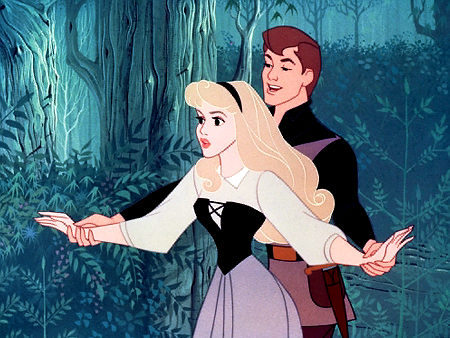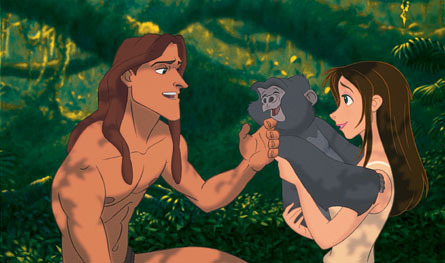Walt Disney's 1994 animated musical The Lion King hit theaters this weekend for a two-week engagement, this time in 3-D. Other Disney films such as Beauty and the Beast, Toy Story and The Nightmare Before Christmas have also received 3-D re-releases throughout the years.
The Lion King was the first film that I ever saw in a movie theater, and it remained a favorite throughout my childhood. It has also endured as a personal favorite not for nostalgia purposes, but because it’s an unflawed masterpiece.
Now that it’s coming out again in 3-D – surprisingly, the technology actually fits well with the already beautiful world of an already perfect film, but more on that later – here are other films from the Disney vault that might benefit from some 3-D magic.  Fantasia (1940)
Fantasia (1940)
Walt Disney’s grandiose epic Fantasia is argued by many film historians as one of the greatest – if not the greatest – animated film of all time. The ahead-of-its-time animation, in tandem with the evocative music and narration-free progression, helped solidify the film as one to be treasured by generations to come. However, the lack of through-line narrative also instilled some kind of disconnect with many, including my childhood self who, so I’m told, always stooped into boredom while Fantasia played on the VCR (yes, the VCR).
Motion pictures are generally intended to play well on the silver screen, but some films were made for the big-screen treatment. Fantasia is one of them and it seems perfect for a 3-D revamp as well.
Fantasia is an immersive, highly engaging feature that derives its panache more from the creation, surroundings, and world itself than from anything going on, speaking in narrative terms. All of the sequences, especially the classic “The Sorcerer’s Apprentice” and the haunting “Night on Bald Mountain” and subsequently beautiful “Ave Maria” would become even more impressive with an extra visual dimension. Sleeping Beauty (1959)
Sleeping Beauty (1959)
Like the majority of animated features to emerge from the Mouse House, Sleeping Beauty boasts timeless music and carefully crafted landscapes. However, this one made for a bit of a departure for Disney, as the character designs were highly stylized and weren’t exactly reaching for realistic appearances.
In addition to the stylized character design, Sleeping Beauty also introduced Maleficent, a villain that would remain one of Disney’s most haunting and disturbing. Eleanor Audley, the voice of Maleficent, perfectly slides into the tone of the character, but a daunting echo makes her all the more terrifying. At the film’s end – just in case you were out of the loop – the villain sets up a battlefield of thorns and becomes a fire-breathing dragon.
That battle would be an amazing thing to see in 3-D, and the unique character design would really shine as well. Cinderella (1950)
Cinderella (1950)
If the shoe fits … okay, but in all seriousness, Cinderella is already a quite magical film by itself, with a fairy godmother and pumpkin carriages. But Disney might be able to extract a little more magic with the 3-D technology, and it wouldn’t just be from the lovely scenery.
Evil stepmother Lady Tremaine is probably the weakest of the Disney villains in regards to the ability to wreak havoc, but the animators made her a devastatingly terrifying, wholly evil antagonist, complete with some of the creepiest eyes you might ever see in an animated feature – or any feature for that matter. What’s more, the aforementioned Audley provides a hauntingly sinister tone for the character.
It’s a character that has enough of a grab to make an impact without 3-D, but the depth provided could add something even more sinister to the already cunning villain. I’ve already babbled quite a bit about Cinderella and its main antagonist, but some other aspects of the feature that’d really make an impression are the ballroom sequences and the “Bippity-Boppity Boo” number.
 Mary Poppins (1964)
Mary Poppins (1964)
Since Snow White and the Seven Dwarfs became a surprise hit in 1937, Disney has been best known for the features in its animated canon. However, Mary Poppins is the exception to that rule with this live-action/animation hybrid withstanding the test of time. The story of two children watched over by nanny Mary Poppins, played by Julie Andrews in an Oscar-winning screen debut, achieved a then-unparalleled level of acclaim, recognition and popularity.
The film wasn’t a success just for Andrews’ endearing work, funnyman Dick Van Dyke as chimney sweeper Bert, or even the terrific soundtrack. All of those factors helped, but something that really propelled Mary Poppins to such great heights was its boundary-pushing technology. Arguably the Avatar of its day, the feature’s extensive combination of live-action scenes and animation was unprecedented. What’s more, visual effects made Andrews appear to slide up the railing of a staircase and glide with an umbrella, among other eye trickery.
Adding 3-D to Mary Poppins would not only give a bit of a boost to those impressive moments, it’d also be fun to see the “Chim Chim Cher-ee” number in 3-D. Tarzan (1999)
Tarzan (1999)
Regarded as the last film in Disney’s decade-long “renaissance” period, Tarzan grossed a stellar $170 million in the U.S. alone when it hit theaters in 1999. It also gave Phil Collins, who worked on the film’s soundtrack, his first Top 40 hit in several years with “You’ll Be in My Heart,” a song that went on to nab the Original Song honor at the Oscars.
The film isn’t as visually groundbreaking or breathtaking as other advancements that can be credited to Disney’s filmography, but Tarzan boasts some genuinely thrilling computer-assisted adventure and action sequences that could benefit from 3-D technology. It’s also decorated with a carefully colored landscape, one that might really stand out with some extra depth.